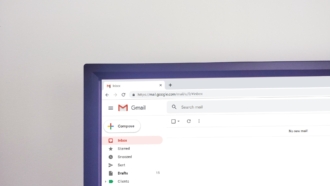You’ve successfully captured a customer’s attention and nurtured them through the sales process. Their interest in your product has translated to a purchase.
So what happens next? Do you leave them to figure out the ins and outs of your product or welcome them with a tailored experience that helps them see the value of your business?
Customer onboarding is a critical part of the customer journey that helps them understand the benefits of your product and how it can improve their lives. It provides them with the information and knowledge they need to use all the aspects of the product to reach their goals.
Without effective customer onboarding, your customers don’t have a clear path to success. However, a logical and individualized customer onboarding flow helps customers see that your product is essential to their lives.
In this guide, we detail the foundational aspects of customer onboarding to help you create your own onboarding sequence. Check out the chapter summaries below for a quick overview, and then dive into each chapter for all the nitty-gritty details.
Chapter synopsis
- Introduction.
- What is customer onboarding? Find out what customer onboarding involves and how it affects your business. We look at how customer onboarding works in different industries, when the process actually begins, and why you should have a customer onboarding strategy before you dive in.
- Key customer onboarding best practices. Learn how to create a customer onboarding process that engages your audience. A personalized journey that speaks to your customer’s pain points is the best way to equip them with the knowledge they need to use your product or service.
- Elements to include in the customer onboarding process. From welcome emails to in-app greetings to product walk-throughs, we cover everything your customer onboarding process flow should include to fully satisfy your customers’ needs.
- Customer onboarding metrics to track and monitor. To determine whether your customer onboarding workflow is effective, you have to carefully track certain key metrics. We go over which metrics you should pay attention to and why they’re affected by your customer onboarding process.
- Jotform as a customer onboarding solution. Effectively managing your customer onboarding process requires the right tools. With Jotform, you can segment users based on form answers, send automated and personalized emails, and ensure your data is organized and usable.
Next, we’ll set the stage with a broad overview of customer onboarding before tackling specifics in later chapters.
What is customer onboarding?
Customer onboarding is the process of introducing new customers to everything your company has to offer in an organized and effective way.
When you acquire a new customer, you’ve earned their interest and trust. They’re probably excited to dive into the product — but those first few interactions after they sign on the dotted line are vital to a successful relationship over the long term.
What is customer onboarding, and why does it matter to your business?
Customer onboarding ensures a customer’s experience with your company is as smooth as possible — from the beginning.
“It’s a critical piece that sets the standard for how the client will work with the business,” says Katie McFarlan, CEO of Dakota Design Company, an operations strategy and support firm for interior designers and wedding planners.
Effective onboarding processes anticipate all of the questions and concerns customers have and answer them in an easy-to-digest way, so they don’t feel overwhelmed or burdened by the information.
The key reason customer onboarding is so important to your business is simple: It helps keep your customers happy. Kevin Miller, cofounder and CEO of digital marketing agency GR0, notes that onboarding is an opportunity for a business to show customers how to gain the most benefits from the product.
Throughout the onboarding process, customers can see that you’re delivering what you promised. This builds trust and shows them your value.
When customers are happy with you from the get-go, they’re more likely to refer you to their colleagues and friends. Acquiring a new customer is a long and costly process, so earning a referral from it is valuable.
The customer onboarding process looks different depending on your industry and business model.
- SaaS: SaaS onboarding requires organizations to provide detailed product knowledge bases, guides, and training, so customers can learn how to use the software. It empowers the customer to use the tools to their advantage.
- Banking: In this industry, customer onboarding involves gathering vital financial information and conducting identity checks. You also need to provide education on the various services that customers can access.
- Marketing: In the digital marketing industry, onboarding is about informing customers of the process so they understand what to expect at each step — strategy, copywriting, design, and development.
When does customer onboarding begin?
Many organizations believe the customer onboarding process officially begins once the sale is complete. However, it’s important to consider onboarding from the perspective of the entire customer journey. McFarlan notes that your communication with customers should have the same feeling from the very first inquiry to onboarding and beyond.
Customer onboarding begins long before the customer signs a contract, right at the lead generation stage. Once the customer has indicated an interest in your product, they enter the sales pipeline. Finally, after being successfully nurtured, the customer makes the purchase, and the official onboarding process begins.
Keep in mind that while these may be distinct stages from an organization’s perspective, they are part of one single journey from the customer’s viewpoint. The customer onboarding journey should feel consistent with the experience during lead generation and while in the sales pipeline.
Why is it vital to have a customer onboarding strategy?
Why is customer onboarding important? If you want to retain your customers and grow your business, customer onboarding plays a critical role.
Like all important aspects of your business, such as marketing, sales, and operations, customer onboarding requires a strategy to be successful. Miller notes that a well-organized and thoughtful strategy helps the process flow smoothly and shows the customer they’re in good hands.
Your customer onboarding strategy should include the following:
- Goals: What do you want to achieve through the onboarding process? For example, do you want customers to use your product three times within the first week? Do you want customers to incorporate your product into their daily schedule?
- Plans: How will you achieve those goals? This element of the strategy is about creating a step-by-step process to ensure your onboarding is successful.
- Clients: What are your customers’ concerns and pain points? Your onboarding process should be tailored specifically to your clients and their needs. This enables you to provide them with the right support, according to McFarlan.
- Metrics: How will you measure customer success throughout the onboarding process? Outline the aspects you’ll monitor and measure to recognize positive outcomes and recalibrate negative outcomes.
Now that you have a foundational understanding of customer onboarding, let’s learn about the best practices to follow to achieve your goals.
Key customer onboarding best practices
Following customer onboarding best practices ensures that your organization achieves its onboarding goals. Whether you want customers to use the product within three days after purchase or refer you to a friend, it’s possible when you do onboarding right.
Research your customers
A personalized experience is vital when developing your customer onboarding process, because different customers will need different onboarding sequences. For example, a tech-savvy user will need different content than a beginner.
Create detailed audience personas to fully understand the types of customers you have. Include demographic, geographic, psychographic, and behavioral details. Then use customer segmentation to determine which kind of onboarding process is best for each customer’s needs.
Miller sets up meetings with each customer during onboarding to learn what they expect from the product and the goals they want to achieve.
Outline the onboarding process
The customer onboarding process should begin long before the customer signs the contract. Outline the process during lead generation and sales, so the prospect has clear expectations about what will happen when they become a customer. Make sure you understand what the customer wants to achieve with the product. This helps you lead them to that goal during onboarding.
And remember, the onboarding process shouldn’t be overwhelming or burdensome, says McFarlan. The process should get your customers excited about this new product instead of stressing them out about all of the information they need to learn.
Use tools to streamline the process
A manual onboarding process can be cumbersome if you have a lot of customers. Use technology tools to systematize and streamline the onboarding process so you can minimize issues and ensure no one falls through the cracks.
For example, collecting signatures is part of every onboarding process regardless of the industry. Requiring a customer to print, sign, and scan a PDF is a slow and arduous process. However, you can significantly speed it up by using apps to facilitate electronic signatures.
You can also use these kinds of tools to automate welcome emails immediately after a purchase. This is a critical step, explains McFarlan, because it’s essential to begin customer onboarding as quickly as possible before customers experience any buyer’s remorse.
Emphasize product value
One of the most important customer onboarding best practices is to use the process to remind customers about the goals your product can help them achieve. However, a one-size-fits-all approach isn’t effective in this case.
Use your customer segmentation research to determine the different pain points customers face and the results they want to see. Offer personalized elements such as kickoff calls or training to meet your customers’ needs.
Miller also suggests a little back-patting. Make sure customers know that you’re good at providing value, even better than the competition.
Communicate clearly and frequently
Don’t leave your customers in the dark after the initial welcome email. Once you’ve sent the email, it’s important to check in on your customers throughout the onboarding process.
Show your availability and the level of support you offer so customers know they can reach out at any time to ask questions. Email or text them to check in on their progress using your product, and provide additional information like user guides, FAQs, and tutorials based on their needs.
Measure KPIs
Customer onboarding isn’t a process that’s set in stone. It needs to be constantly measured, tracked, and adjusted to meet the needs of your customers.
Identify key metrics that help you determine the success of your onboarding process, such as customer lifetime value, time to value, and churn rate. Understand the key points of friction during the process and where customers drop off.
Improving these areas can streamline your customer onboarding and improve customer satisfaction in the long term.
Focus on feedback
Provide opportunities for your customers to offer constructive feedback throughout the onboarding process. Ask them if specific user guides are helpful or if they would like more video training, for example.
Understanding whether your onboarding materials are providing the support customers need is critical. Incorporate this feedback to improve the onboarding process so you can continue to help current and future customers.
We’ve covered customer onboarding best practices, so now it’s time to put them into action and develop a customer onboarding process.
Elements to include in the customer onboarding process
The key objective of the customer onboarding process is to educate your customers, ensuring they gain the maximum benefit from your product.
When customers know how to use your tool more effectively, they can incorporate it into their lives — and soon, it will become indispensable. However, if the education you offer lacks detail and clarity, customers may become frustrated and end up abandoning your solution.
To increase customer engagement from the start, here are the key steps to include in your customer onboarding process.
Welcome email
The welcome email is the first interaction you have with customers after they’ve purchased your product. You should send it immediately after they’ve converted from prospect status, says McFarlan.
This is your opportunity to thank them and remind them of the key benefits they will receive now that they’ve become a customer. The welcome email should include a clear and direct call to action that encourages customers to begin using your product or learning about specific features.
Although short, welcome emails aren’t easy to write. Check out this blog on writing better welcome emails and these successful welcome email examples.
Greeting message
Not to be confused with the welcome email, a greeting message is what customers see when they first log into their new product’s account. It’s a short and direct message that tells them about a specific action they should take next, such as changing their password or watching a tutorial video.
Product setup
Your customers need to know how to get started using your product. A step-by-step guided tutorial video or setup wizard can help them figure out the steps they need to take to make the product a part of their lives.
Keep in mind that this customer onboarding step should be optional, as some users may already be familiar with your product and won’t want to sit through a beginner-level tutorial.
Feature callouts
Feature callouts use banners to point out important features and the value they provide. While you will still need to provide actual guides to using each feature, the banner is a concise introduction.
Be sure to consider the empty state, and provide clear content that tells customers what they should do with a certain feature. For example, if you have a checklist tool, your empty state message can read, “Write down important details your team needs to get done today.”
Product walkthrough
A step-by-step product walkthrough is critical for teaching your customers how to use your solution. As customers finish a task in your product, they should see a new callout that shows them how to take the next step, and so on.
Many customers learn better by actually using the product than by watching a video or reading a tutorial.
“Customers should feel like they are on track to receive a return on their investment,” says Devin Schumacher, founder at SERP, a digital marketing agency. An onboarding element like a product tour can help improve retention rates, increase time to value, and reduce churn.
Knowledge base
A knowledge base is an excellent way to empower your customers with answers to all of the product questions on their minds. Typically, this is a heavily detailed resource organized by topic or feature.
Customers can peruse the knowledge base on their own when they have a specific question. It’s a self-serve way for them to get help.
The knowledge base can also include product tutorial videos that customers can access for more support. Check out Jotform’s knowledge base for an example of what to create for your onboarding process.
Regular check-ins
Anthony Martin, CEO and founder of Choice Mutual, a final expense life insurance company, notes that the onboarding process should be “treated like an information exchange.” For some customers, the onboarding process can seem overwhelming — especially if much of it is automated.
Frequent check-ins by a customer success representative help customers feel more at ease and provide them with an opportunity to ask questions or provide feedback. Throughout the onboarding process, customers should never feel they have to do it all on their own.
Milestone celebrations
People are intrinsically motivated by rewards, and it’s no different during the customer onboarding process. Celebrate with customers after they complete each milestone, such as completing their profile or finalizing their first task in your app. You can celebrate with an email, a text, or an in-app notification.
Now that we’ve discussed the important elements of your customer onboarding process, it’s time to figure out how to measure its success.
Customer onboarding metrics to track and monitor
Customer onboarding metrics can help you determine whether your onboarding process is successful or needs improvement. Like other areas of your business, such as digital marketing or sales strategy, a customer onboarding strategy requires tracking and monitoring.
When you review key customer onboarding metrics frequently (i.e., monthly or weekly), you’ll see which areas require you to pivot and which accomplish your onboarding goals.
Lifetime value (LTV)
The customer lifetime value (LTV) refers to how much you expect a single customer to spend with your business.
The longer you retain the customer, the higher their LTV will be since they will have more opportunities to purchase from you. For example, if you have a subscription product, a customer who has been with you for 12 months will have a higher LTV than a customer who was only with you for one month.
The customer onboarding process is an excellent way to retain customers by empowering them with education about how to maximize the value of the product.
Time to value (TTV)
Time to value (TTV) is the amount of time it takes for a customer to get value from your offering. The goal is to help customers find value in the shortest possible amount of time. For example, if you have a scheduling product that enables teams to save time while scheduling meetings, the TTV is how quickly the customer can see the results you promise.
It’s the role of customer onboarding, Miller notes, to make it clear to your customers how your product best meets their needs. If it takes them several months to see any time savings because they aren’t using your product correctly, they will likely stop using it.
Measuring time to value helps your organization identify the “aha” moment for customers — when they realize how valuable your product is. This is a critical insight your business can use to acquire and retain more customers. Learn how to accurately measure TTV in this blog.
Churn rate
The customer churn rate, also called the attrition rate, is the rate at which your customers stop doing business with you. This can happen at any time after they’ve purchased your product, not just during the onboarding process.
The onboarding process is your opportunity to show how your product is critical to the customer’s day-to-day life. If you can’t make your product indispensable, the possibility that your customer will stop using it increases.
If your churn rate is high, that means your onboarding process isn’t effective at showing customers the value of your product. Take a look at this blog for proven ways you can reduce customer churn.
Retention period metrics
Similar to churn rate, retention period metrics help you determine how long you retain customers — and the point they stop interacting with your product. If a large percentage of your customers drop off within a week of signing up, it’s likely that your welcome email and greeting message are ineffective.
If any of your customers drop off after the onboarding is complete, it’s possible your onboarding left too many unanswered questions and didn’t prepare them to use the product.
Net Promoter Score (NPS)
The Net Promoter Score (NPS) refers to how likely your customers are to refer you to someone else. NPS is about customer loyalty and satisfaction. If you have a low NPS, it’s possible your customers don’t see value in your product and don’t feel your business is indispensable.
Improving your NPS score with effective customer onboarding can not only help you keep customers happy, but it can also lower the cost of each new customer acquisition with referrals.
Referrals
McFarlan notes that actual referrals — which are different from an NPS score — indicate your customer onboarding process is working, especially if you start receiving referrals even before the onboarding is over.
Your customers may be nervous during the onboarding process because there’s a lot for them to take in. If you make them feel excited, comfortable, and supported, they will be more likely to refer you to others while still going through the onboarding process, says McFarlan.
Reviews
Martin notes that it’s also important to consider qualitative metrics reviews.
“While customer sentiment is not always easy to graph or monitor in a spreadsheet, it offers invaluable perspective in understanding your customers’ pain points and maintaining long-term customer satisfaction,” says Martin.
Knowing how your customers feel about your business can actually help you interpret quantitative metrics more accurately. With these metrics in mind, let’s look at how an effective onboarding solution like Jotform can help you create a streamlined and results-oriented customer onboarding process.
Jotform as a customer onboarding solution
Using effective tools in your onboarding process ensures a smooth and streamlined experience for your customers. Conducting onboarding manually or with the wrong tools can result in errors, missed opportunities, and frustrated customers.
Solutions like Jotform not only offer a friction-free experience for the customer, they also help organizations better manage the onboarding process.
Customer onboarding form
The Jotform customer onboarding form is an excellent way to gather critical data on your customers and use that insight to segment them into specific categories based on behaviors, needs, and pain points.
Use that data to send personalized onboarding emails. And, no, you don’t have to manually write these emails. You can use conditional logic so customers receive information tailored to their user journey.
You can also set up your SMTP account for automated emails after the customer fills out a form, removing Jotform branding so the customer sees consistent branded communication.
“Everything customers say is a directional clue,” notes Martin. Using a simple and easy-to-navigate form allows you to better understand your customers’ objectives and ensures you provide the information they need to move forward.
Table templates
Jotform’s table templates provide a way to gather, store, and organize customer data for your onboarding process. You can use the customer onboarding form as an automated way to collect data — or enter it manually based on your needs. With the details in hand, it’s easier to create tailored onboarding experiences that help customers reach their goals for using your product.
Email forms
Once you accurately segment your customers through the customer onboarding form, Jotform’s email logic feature lets you send customized emails based on a customer’s responses. Set up your own customer onboarding email template for each scenario so your customers receive content that relates to their pain points and goals.
Remember, it’s vital to send that welcome email as soon as possible after customers purchase the product, says McFarlan. Tools like Jotform can automate this process.
New client onboarding checklist
Jotform’s customer onboarding software provides checklist templates to ensure your onboarding process covers all the necessary details.
With a new customer onboarding checklist, you can specify the content and the duration of the onboarding process — and whether the customer has completed each step. This ensures your customers don’t forget anything and are prepared to use your product once the onboarding process is over.
Integrations
Your customer onboarding software should work in conjunction with your CRM. Jotform features more than 100 integrations with leading customer relationship management tools to automate data entry, reducing inaccuracies, increasing efficiency, and saving time.
Remember, it’s vital to personalize the onboarding process. “Nobody wants their first onboarding communication with a company to be an auto-generated, generic message,” says Schumacher. By integrating with your existing systems and CRM, Jotform can ensure your onboarding communications are personalized to each customer.
Leading customer onboarding platforms like Jotform help you automate repetitive tasks, streamline the process, and improve the onboarding experience for your customers.
As you’ve learned in each chapter, customer onboarding helps customers fully realize the value of your product. It’s an excellent opportunity for your organization to learn more about your customers’ needs and pain points, and to build meaningful relationships as you help them achieve their goals.
Be sure to develop a customer onboarding strategy with clear metrics that measure your performance. By following best practices, creating a personalized customer onboarding process, and using effective customer onboarding tools, you can empower your customers with the knowledge they need to make your product an essential part of their lives.
Meet your customer onboarding guides
Anthony Martin
Anthony Martin is the CEO and founder of Choice Mutual, a final expense life insurance company. His team ensures the onboarding process is easy for customers to navigate.
Devin Schumacher
Devin Schumacher is the founder of SERP, a digital marketing agency. He offers highly personalized onboarding experiences for his clients.
Katie McFarlan
Katie McFarlan is the CEO of Dakota Design Company, an operations strategy and support firm. She specializes in setting up customer onboarding systems for her six- and seven-figure interior designer and wedding planner clients.
Kevin Miller
Kevin Miller is the cofounder and CEO of GR0, a digital marketing agency. His onboarding process includes an introductory meeting with his team followed by a walkthrough of upcoming campaign plans to ensure they’ve answered all customer questions.




































































Send Comment:
1 Comments:
9 days ago
Good day team,
Can I know the standards used in putting together this great article, was the ISO standards on customer onboarding put into consideration?
I look forward to your response,
Kind regards,